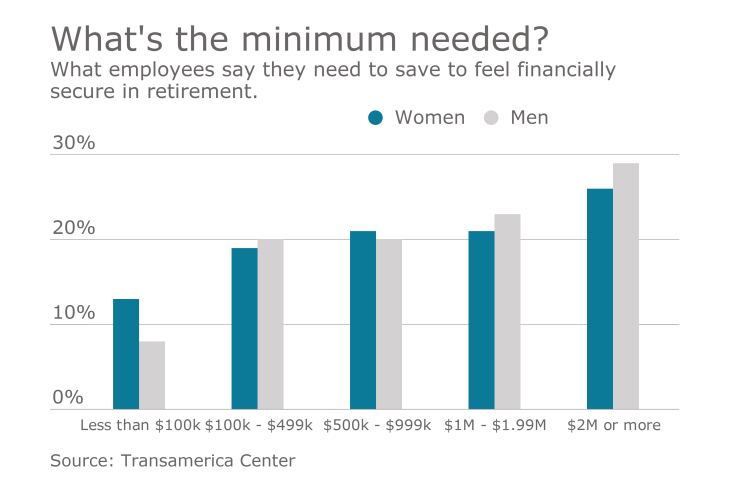Women have made tremendous progress over the years when it comes to educational attainment and career opportunities, but they still face unique challenges that make it hard for them to save for retirement.
“The
If women take off to care for children or other relatives, chances are they are not setting money aside for their future selves, which leads to lower lifetime savings and a dramatic drop in their long-term government benefits, she adds.
“What makes this the perfect storm is, statistically speaking, women live longer than men and we need to be saving even more,” Collinson says.

And while it may seem bleak, Collinson says there are some very specific things women can do to improve their long-term retirement outlook. The most important thing a female worker can do is estimate how much she needs to save for retirement. Transamerica Center for Retirement Studies found that more than half of women in the workforce are still guessing at how much they need to save. Fewer than one in 10 have used a retirement calculator.
Employees should “take time to crunch the numbers and understand what [their] goal is. The reality is the number will be quite shocking; however, that’s the starting point. From there [employees] can start building a roadmap to how she is going to get there and that is the basis and beginning of her long-term financial plan,” she says.
That’s where employers can help by encouraging their employees, both men and women, to take advantage of the tools and resources offered by their retirement plan provider.
Women also need to factor in taking time out of the workforce for parenting or caregiving. That time off can have such far-reaching consequences; Collinson recommends that female employees speak with their employers about
In its report “Seventeen facts about women’s retirement outlook,” TCRS found that 53% of women plan to retire after age 65 or do not plan to retire, which is similar to men. Half of women plan to work after they retire, including 11% who expect to work full-time and 39% who plan to work part-time, the study found. Roughly half of men also plan to work after they retire.
“It’s an interesting trend, and in many ways, a logical trend that so many people are planning to work longer and retire at an older age. It makes perfect sense for increasing longevity and a shortfall of savings but it doesn’t happen automatically,” she says. “People need to be extremely proactive to ensure they can continue working, that they stay healthy enough and that their skills are up to date and marketable.”
The TCRS survey found that a majority of women are taking proactive steps so they are able to continue working past the age of 65, with 62% saying they are staying healthy and 54% saying they are performing well at their current job. Forty-two percent of women say they are keeping their job skills up to date.
Many women are likely to rely on Social Security as their primary source of income when they retire so “it is critically important they do their homework. Find out what their benefits are and how those benefits may be affected by being a spouse and a stay at home mom vs. an earning spouse and how they may be affected by the death of a spouse or divorce,” Collinson says. “All of these scenarios have implications for Social Security benefits. It is best to do your homework up front than be surprised when the time comes.”
The survey also found that only 19% of women respondents had a backup plan if they were forced into retirement sooner than expected, either because of job loss, health issues or family obligations.
The good news is that 72% of women respondents said they are saving for retirement through an employer-sponsored plan or through outside accounts like IRAs or mutual funds, which is slightly fewer than the 80% of men who said the same.





